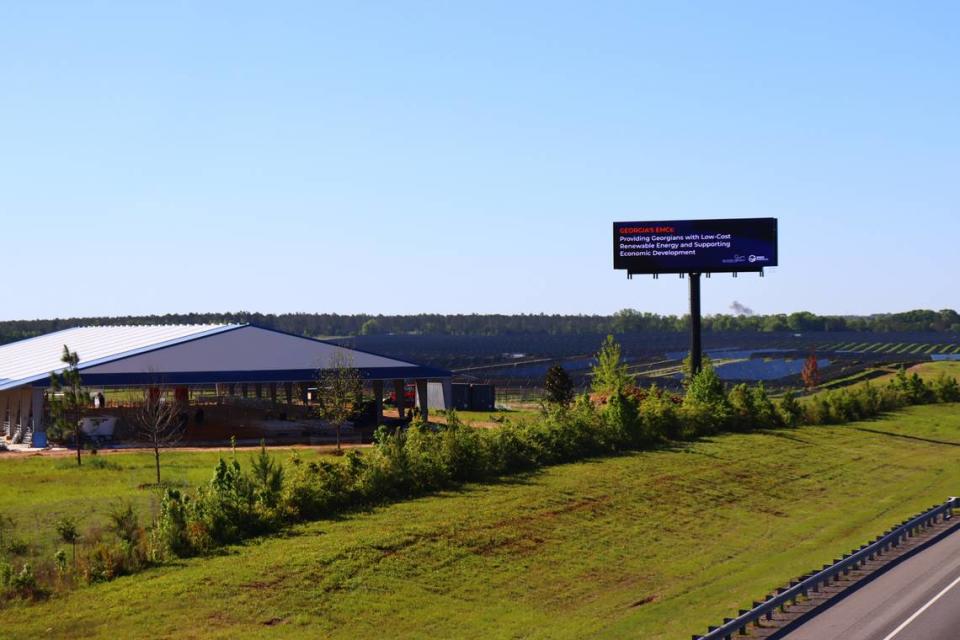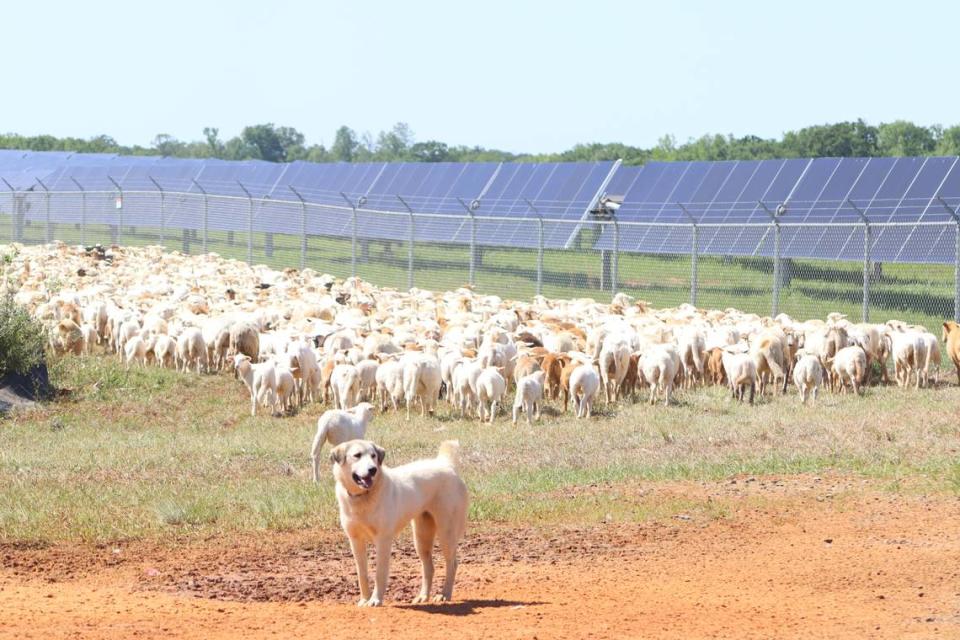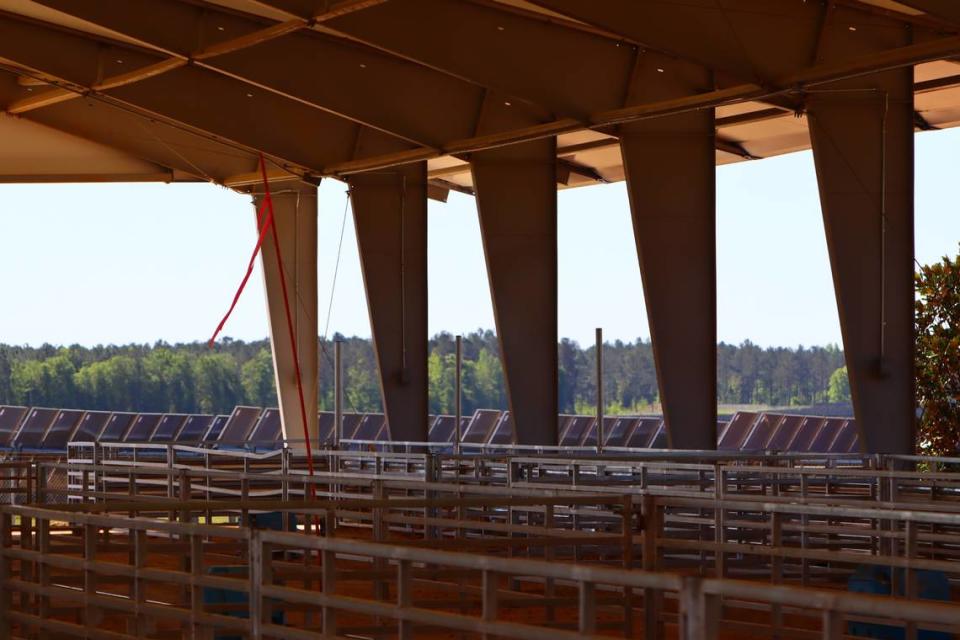This solar company is generating clean energy in GA... and herding sheep at the same time
A new synergy is blossoming between solar power farms and sheep grazing in Georgia.
The Nashville-based solar company, Silicon Ranch, owns and operates 20 solar projects in Georgia, powering a quarter of a million homes from 1,500 MW of clean solar energy. The company has nearly a quarter of the entire state’s solar energy portfolio that go to 30 of the 38 Georgia electric management co-operatives.
Uniquely positioned as a land owner, not just a tenant, the company embraced its autonomy to manage the land in a way that benefits the land, renewable energy, and the sheep livestock industry.
For the last several years, a handful of the Silicon Ranch solar sites in Georgia have flocks of sheep running through the arrays and stomping and chomping on grass. Silicon Ranch touts this as regenerative energy or regenerative land management, adding to their renewable energy development.
On Friday, solar developers, state leaders, and shepherds came together at the 68 MW Houston Solar project in central Georgia to celebrate the opening of the company’s very own 26,000 square foot lambing barn.

“These solar projects are underwritten for 40 years of useful life,” Matt Beasley, Chief Commercial Officer of Silicon Ranch said. “Now we have sheep geneticists, lifetime ranchers, and shepherds. If we wanted to do this at scale we had to grow our own flock of sheep. We’re expecting to reach 30,000 sheep in Georgia by 2030.”

Today about 900 sheep are grazing at the Houston County site and a few thousand at other sites.
Silicon Ranch prides itself on the largest regenerative sheep and solar project in the country, and the first-ever solar site to have a lambing barn in the world.
The company has invested $3 billion in solar projects in Georgia alone. Over the next 40 years, around $8 million in taxes will from the Houston Solar project will go directly to the Houston County Commission and school districts.
“Silicon ranch has been a good partner for us,” Houston County Commissioner Chair, Dan Perdue said. “The ROI on this project is great. They took it from timber land and put it to good use for energy and the community.”
Why sheep & what’s their environmental ‘hoofprint’?
Using solar panel land for purposes other than generating energy is not new. Over the last five or six years solar projects are growing vegetables, and creating native plants for pollinators. This trending multi-use land development is called “agrovoltaics”.
Silicon Ranch decided on sheep to save costs on mowing, add to land productivity for water management and soil health, and tap into a waning sheep industry in the U.S.
Plus, they argue, they are drawing down carbon.

In 2018, the company’s leadership team spoke with a cattle rancher near one of their solar sites in Southeast Georgia, initiating a new era in solar land management.
“Fairly docile, and easily managed–unlike goats that bump into things and eat wires–sheep are the right height to move beneath solar panels without damaging them,” Silicon Ranch spokesperson Samantha Currie said in an email.
The sheep are bred for eventual consumption at about 15 years old.
“Imports from New Zealand and Australia are where 75% of the lamb is coming from,” Loran Shallenberger, Regenerative Energy Project Manager at Silicon Ranch. “There is a real opportunity to displace some of the import with American lamb.”
There are different requirements per county as far as what solar developers must do to maintain the land after construction is over. In Silicon Ranch’s case, the sheep act as lawnmowers.
“There is an operational efficiency to grazing, we’ve reduced cost by 20% of using a mowing vendor.”
Sheep are ruminants, their saliva actually transforms the ground and soil health below the surface.
“By intentionally managing grazing of sheep, we’ve seen an increase in diversity above and below ground,” Jim Malooley, Senior Manager in regenerative energy at Silicon Ranch said. “Ruminants have the capability of transforming sunlight into protein. We’re seeing improvement in water infiltration, which reduces runoff.”
As far as the carbon market, Malooley said this is an area Silicon Ranch hasn’t quite delved into yet, but said there are certainly positive compound benefits of carbons.
“We’re only in our third year with the sheep,” he said. “What we do know is we are sequestering carbon in the soil and we are in the process of measuring that impact. We are trying to quantify it and there is strong evidence to continue in this direction.”
Malooley added that the company does not use chemical fertilizers, pesticides, herbicides, and we’re feeding the animals from the ground, building a microbiome in the soil.


